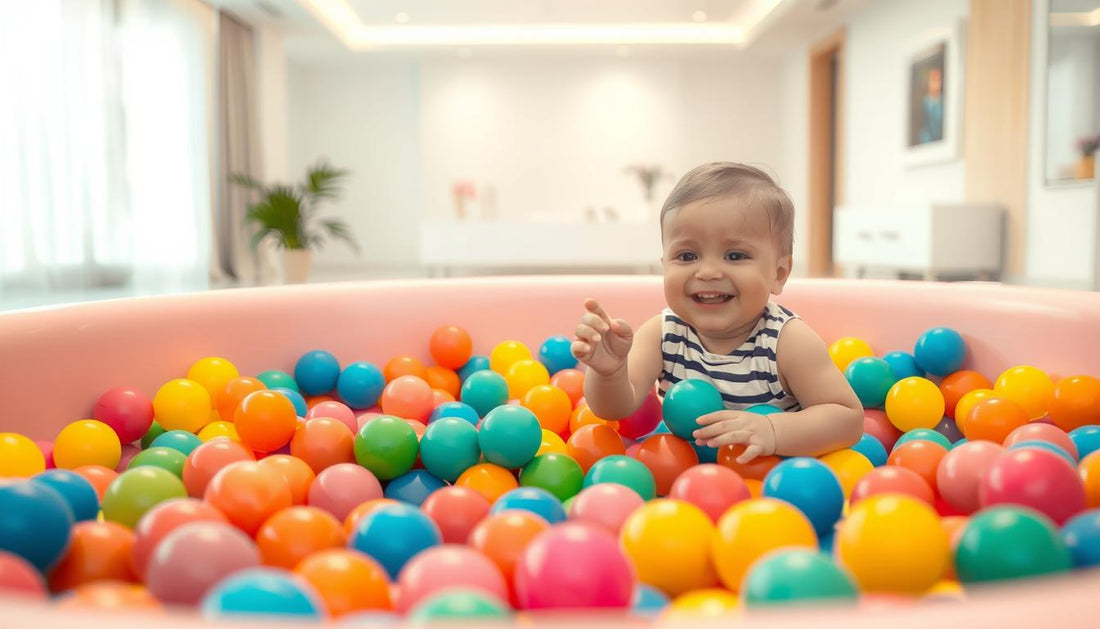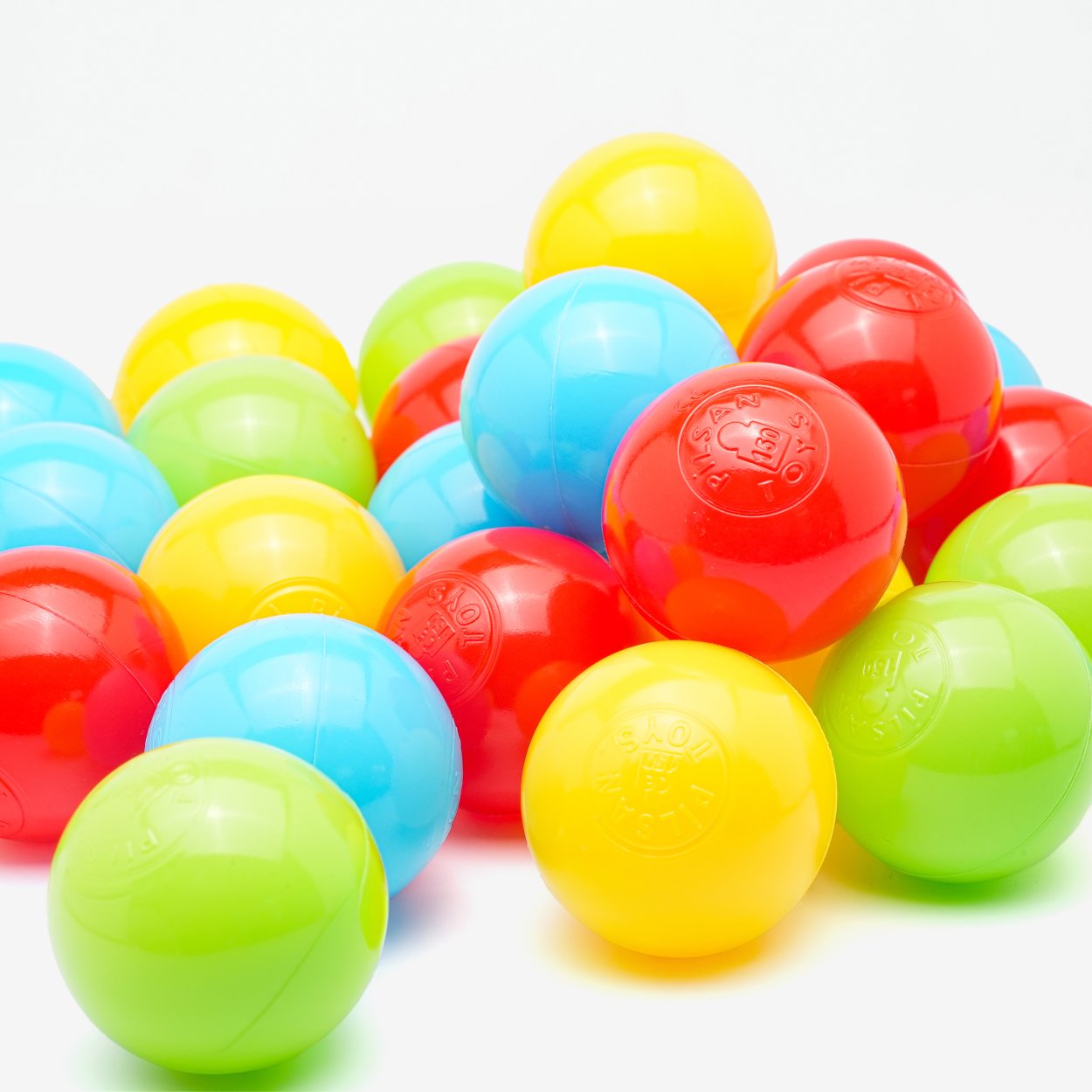
How to Stop Germs and Allergens in Baby Ball Pits
Share
What Steps Should You Take to Eliminate Germs and Allergens from Baby Ball Pit Areas?
Parents and caregivers prioritize the health and safety of babies above all else. Softplay places a high value on keeping play areas clean because they understand its significance.
Baby ball pits that are not properly cleaned can develop into breeding grounds for various germs and viruses. It's key to stop illnesses from spreading. Simple procedures enable parents and caregivers to create safe and fun play areas for children.
Key Takeaways
- Baby ball pits require rigorous cleaning schedules to maintain proper hygiene standards.
- Keeping it clean stops illnesses from spreading.
- Softplay focuses on a safe play space.
- Simple steps can keep ball pits clean.
- Baby health depends on maintaining a clean play space.
Understanding the Risks: Germs and Allergens in Baby Ball Pits
Despite their harmless appearance baby ball pits frequently harbor harmful germs and allergens. Ball pits offer children fun playtime experiences and they can be found in both playgrounds and home settings. The space where balls and children gather turns into an environment that facilitates bacterial and viral growth.
Ball Pits Typically Hold Bacteria and Viruses
Ball pits for babies create environments where dangerous bacteria and viruses can easily spread. Ball pit environments commonly host both bacterial strains like E. coli and Salmonella and infections from rotavirus and norovirus. The bacteria and viruses found in ball pits cause conditions including diarrhea and fever.
Potential Allergens and Their Effects
Ball pits provide a habitat for allergens which include dust mites as well as mold and mildew. Allergic responses in children using ball pits span from slight discomfort to critical medical issues. Softplay advises cleaning and disinfecting baby ball pits routinely to help minimize these health risks.
Using hypoallergenic materials and ensuring good air circulation in ball pit areas can also reduce allergy risk.
Hygiene Standards in Baby Ball Pits
Children's play areas require strict adherence to hygiene and safety protocols. Softplay highlights the necessity of regular maintenance as a protective measure against germs and allergens.
Regular Cleaning and Disinfection Methods
To maintain cleanliness in a baby ball pit, follow a regular cleaning and disinfection schedule. Use products that are safe for children and approved for softplay materials.
Safe Cleaning Products for Softplay Ball Pits
Choose mild, hypoallergenic detergents that won't damage the pit or cause irritation. Avoid abrasive and chemical-heavy cleaners.
Frequency of Cleaning Recommendations
Softplay recommends:
- Weekly cleaning and disinfection
- More frequent cleaning if the ball pit is heavily used
Choosing Hypoallergenic Materials
Use breathable and allergen-resistant materials for both the ball pit structure and its contents. This minimises allergic reactions.
Maintenance Tips for Home Ball Pits
Daily Quick-Clean Routines
- Remove visible dirt and debris
- Wipe down surfaces with a gentle cleaner
- Ensure the pit is dry and moisture-free
Monthly Deep Cleaning Process
- Disassemble the ball pit if possible
- Wash and disinfect all components
- Ensure everything is completely dry before reassembly
These steps help parents and caregivers keep baby ball pits hygienic and safe for everyday use.
Conclusion: Creating a Safe Play Environment
Baby health relies on both the cleanliness and safety standards maintained in play spaces. Parents and caregivers can protect their children when they understand the risks associated with baby ball pits and implement consistent cleaning practices.
Softplay delivers high-quality equipment designed with hygiene in mind. These guidelines help create germ-free ball pit environments that are safe and enjoyable.
FAQ
How often should I clean my baby ball pit?
According to Softplay it's important to maintain weekly cleaning and disinfection of your baby ball pit and to do more frequent cleanings if the pit is heavily used.
What types of germs and allergens are found in baby ball pits?
Baby ball pits contain both E. coli and Salmonella bacteria. Viruses such as rotavirus and norovirus can also be found, along with allergens like dust mites, mold, and mildew.
How can I reduce allergy risk in my baby ball pit?
Use hypoallergenic materials for building both the ball pit and its surrounding area. Regular cleaning and disinfection procedures help eliminate allergens and germs.
Which fast daily cleaning actions will keep my baby ball pit hygienically maintained?
Daily, remove any visible dirt or debris. Wipe surfaces with a gentle cleaner. Check the ball pit to confirm that it contains no water and remains completely dry.
Do I need to take apart my baby ball pit for deep cleaning?
Yes. Disassemble the ball pit during monthly deep cleaning. Clean and disinfect all parts. Allow everything to dry fully before reassembling. This prevents dirt and moisture buildup.
Are hygiene features included in Softplay ball pit design elements?
The design of Softplay ball pits combines safety features with cleanliness standards. Their products use top-quality materials that help prevent germ and allergen buildup.
What cleaning products should be used to maintain Softplay ball pits without compromising safety?
For maintaining Softplay ball pits, use kid-safe gentle detergents. Avoid abrasive cleaners or harsh chemicals that could damage the equipment or pose a health risk.

